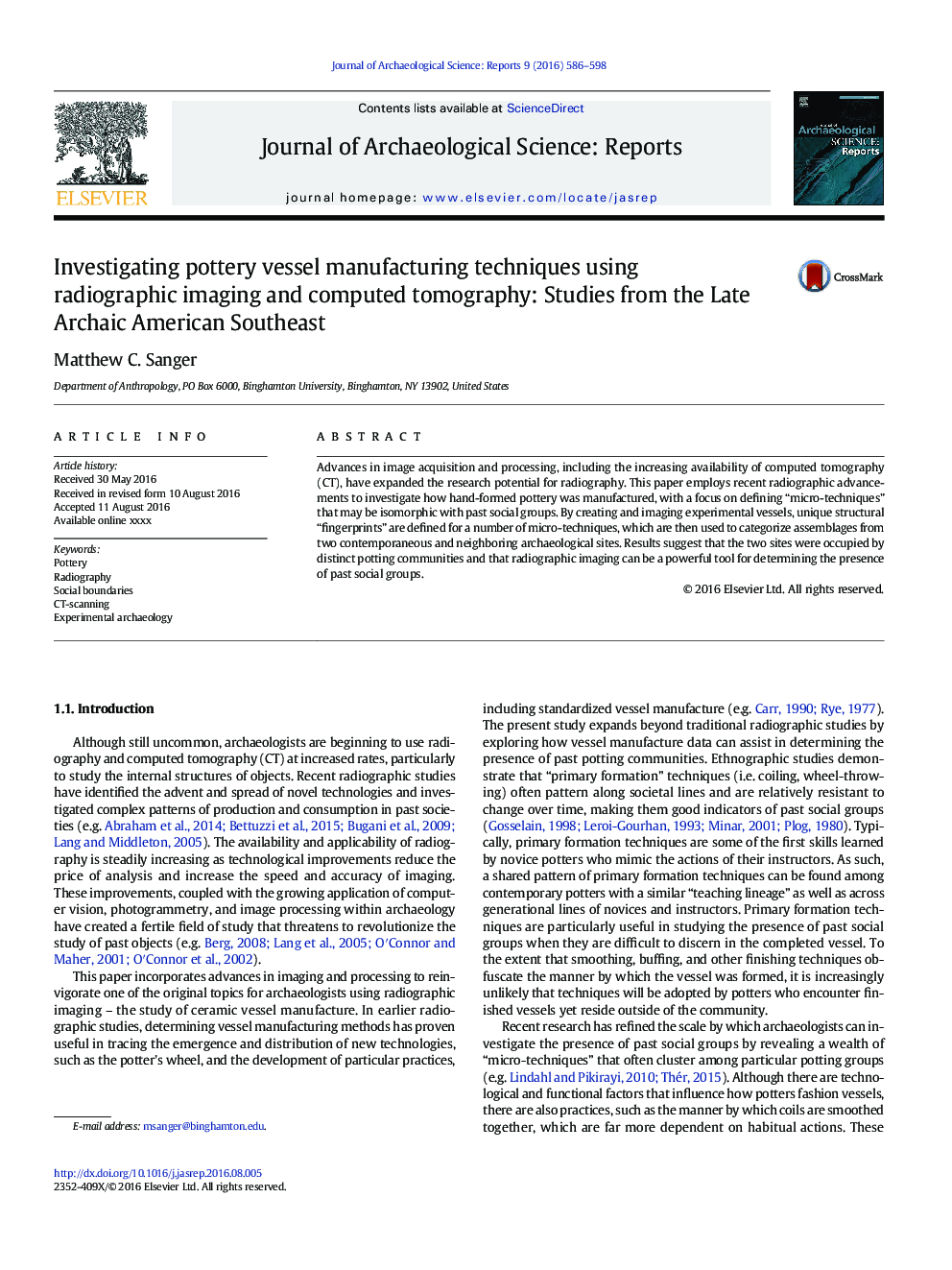| Article ID | Journal | Published Year | Pages | File Type |
|---|---|---|---|---|
| 7445684 | Journal of Archaeological Science: Reports | 2016 | 13 Pages |
Abstract
Advances in image acquisition and processing, including the increasing availability of computed tomography (CT), have expanded the research potential for radiography. This paper employs recent radiographic advancements to investigate how hand-formed pottery was manufactured, with a focus on defining “micro-techniques” that may be isomorphic with past social groups. By creating and imaging experimental vessels, unique structural “fingerprints” are defined for a number of micro-techniques, which are then used to categorize assemblages from two contemporaneous and neighboring archaeological sites. Results suggest that the two sites were occupied by distinct potting communities and that radiographic imaging can be a powerful tool for determining the presence of past social groups.
Related Topics
Social Sciences and Humanities
Arts and Humanities
History
Authors
Matthew C. Sanger,
